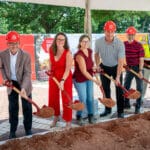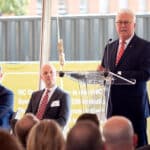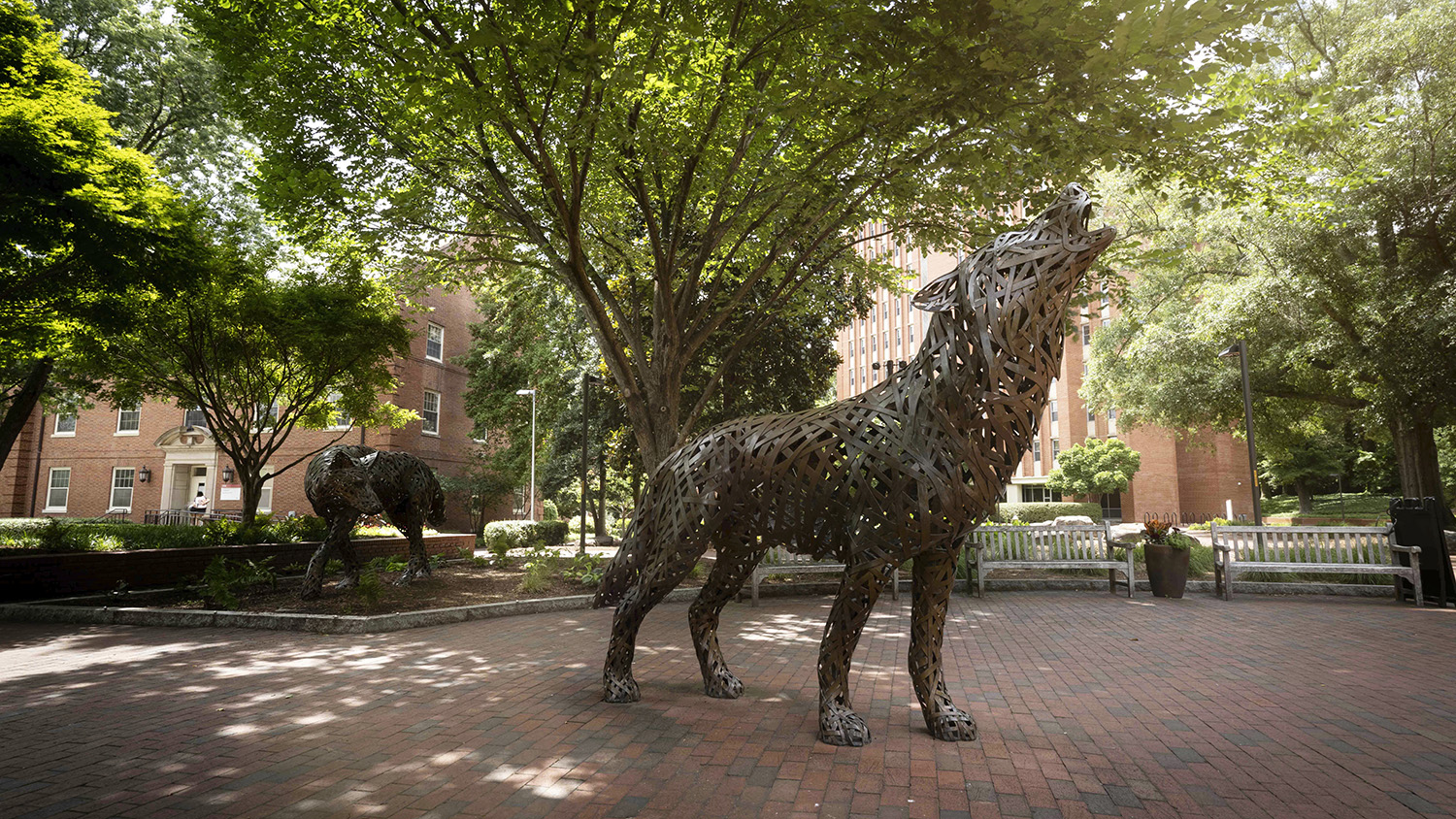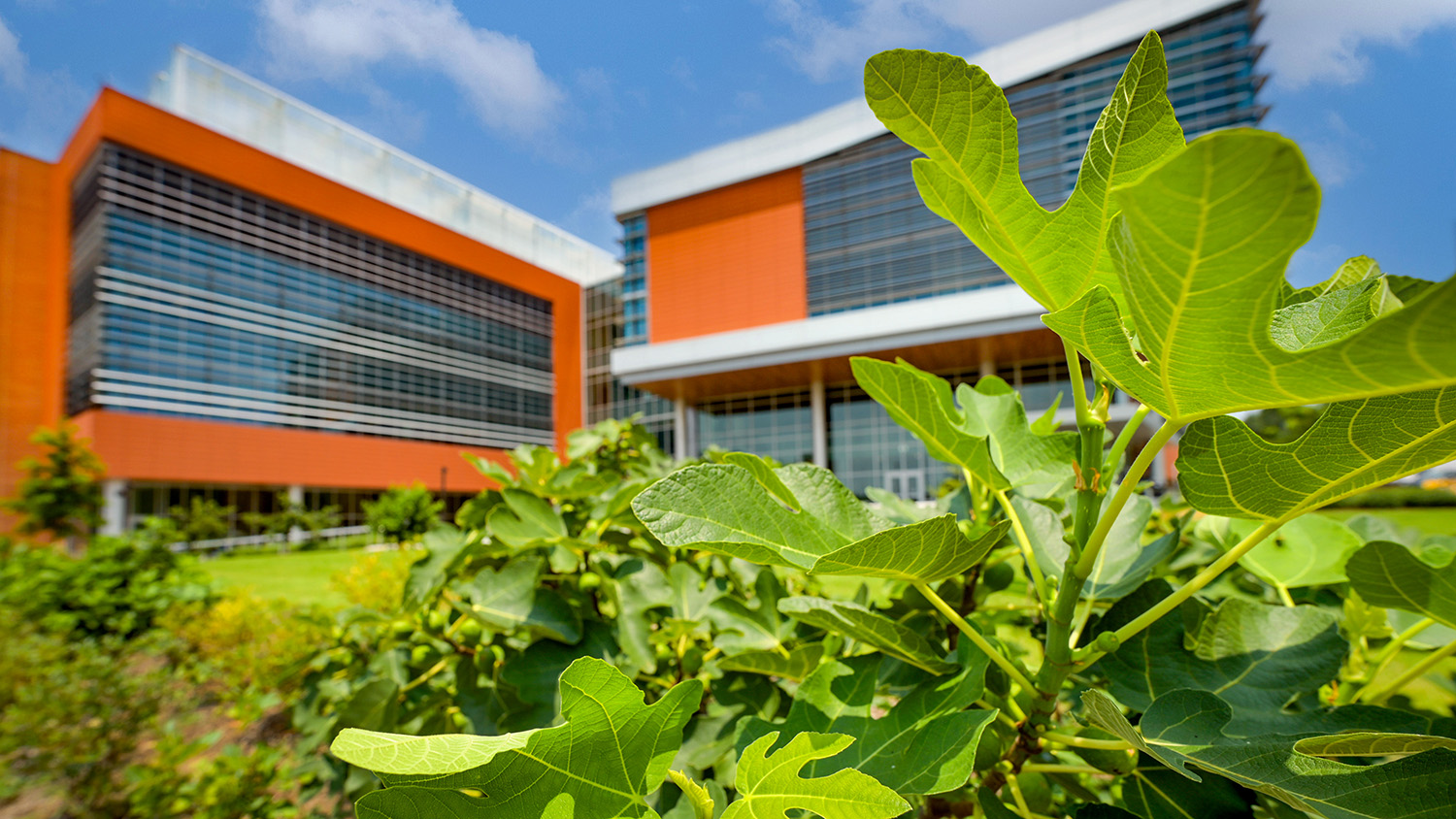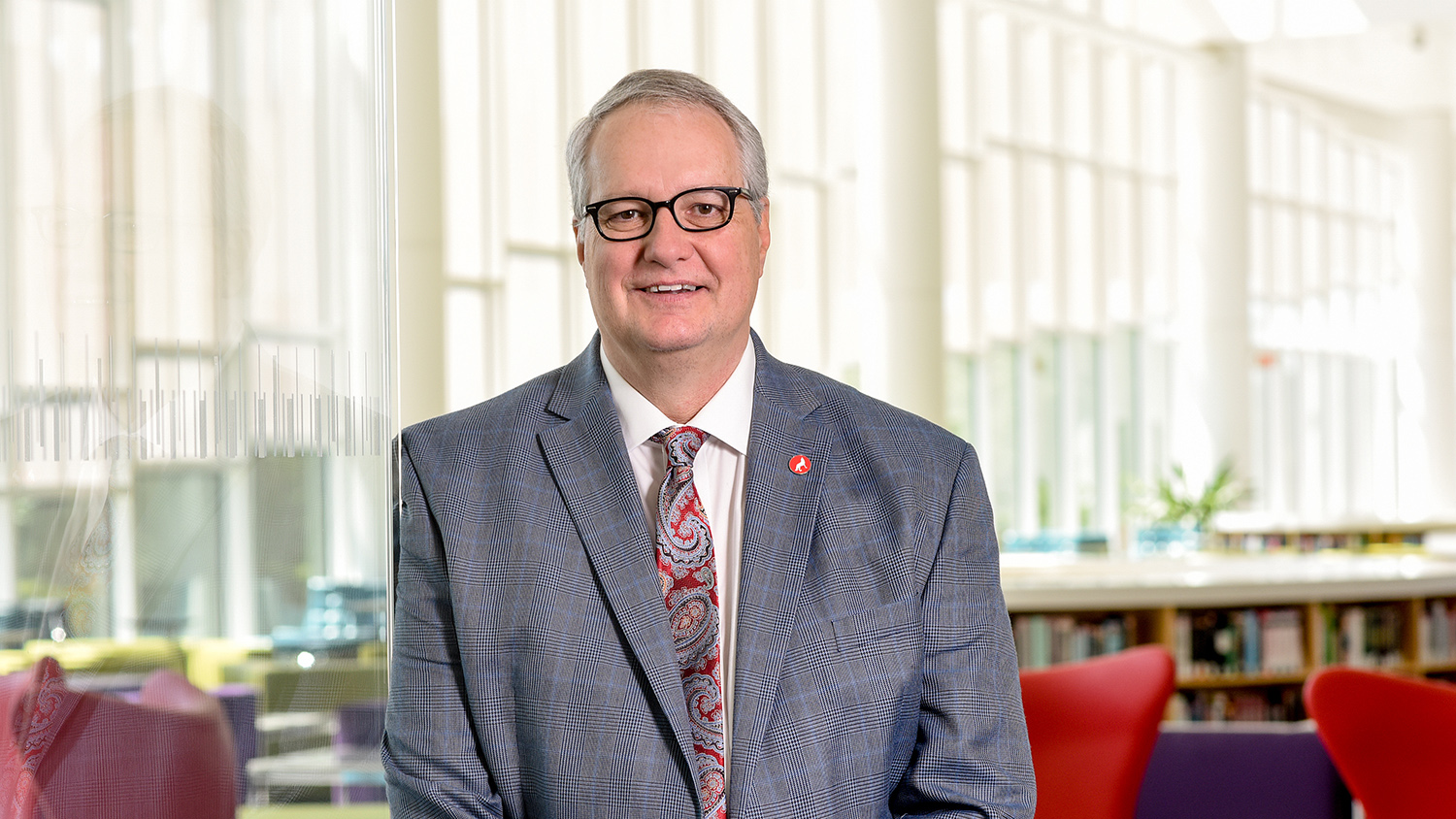NC State Hosts Groundbreaking for Integrative Sciences Building
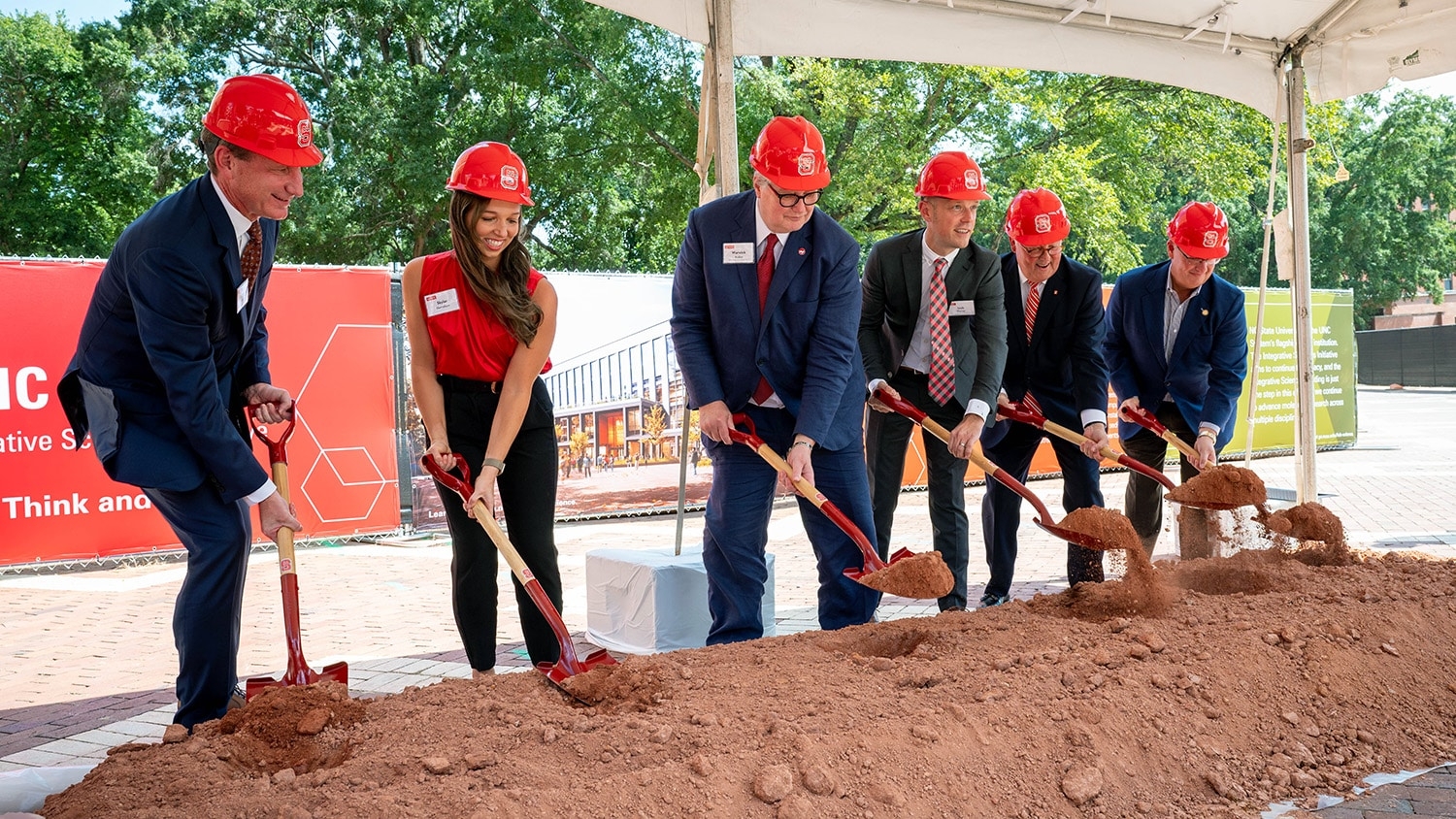
On Sept. 8, the university community gathered to mark the start of a major venture for the Office of the Executive Vice Chancellor and Provost and numerous colleges across campus. University dignitaries and key figures in the ISB’s development took part in the ceremony.
“We are all very excited about this building and initiative,” said Executive Vice Chancellor and Provost Warwick Arden. “Together, this initiative and building will transform teaching, research and public engagement in chemistry and other STEM fields at NC State.”
The state-of-the-art Integrative Sciences Building, covering 153,000 square feet, will house the new Integrative Sciences Initiative. The initiative will bring together scholars from across NC State focused on research and training in the molecular sciences, while enabling them to work across disciplines to solve challenges and bring new solutions to society. The Integrative Sciences Building will also revitalize the Brickyard, one of the main centers of activity on NC State’s North Campus.
The Opportunity for a Bolder Space for the Future of Science
NC State is the UNC System’s flagship research institution for the STEM fields, graduating one-third of all STEM students in the system. More than half of NC State graduates major in STEM fields, with each graduate taking at least two or more chemistry courses. These priorities create a rising demand for teaching spaces suited for radical changes occuring in molecular sciences.
In order for NC State to continue to elevate its status as one of the world’s leading STEM universities — and to continue attracting the best and brightest faculty and students — the university must have superb basic and applied molecular science programs and facilities.
“This building and initiative are vitally important because every modern challenge facing human society involves the sciences,” said Lewis Owen, dean of the College of Sciences. “Rising to meet those challenges requires chemists, biologists, physicists, engineers and mathematicians to work together. Fortunately, new technologies are making it ever easier for these researchers to collaborate, particularly as they study molecules — the fundamental chemical building blocks of human bodies, medicines, fertilizers and energy systems alike. Making advances in molecular science is the cornerstone of this initiative.”
The initiative will include STEM researchers and scholars, and will reach beyond these disciplines to include social sciences, the humanities, design and the arts. This interdisciplinary effort recognizes that implementing beneficial real-world solutions requires multiple perspectives and disciplines.
Collaborative research fostered through the initiative will also help provide new solutions to challenges like cancer, sustainability and infectious disease.
Simultaneously with the building of the ISB, the university is also reimagining and renovating other parts of the science infrastructure on main campus. This includes Polk Hall, built in 1926, and Dabney Hall, built in 1969. Together with the ISB, these buildings will anchor a next-level science corridor at NC State.
The Integrative Sciences Initiative and building will play different roles for students in different disciplines. For students in engineering, they “represent a chance to leverage engineering in the molecular and life sciences in a world-leading manner,” said Jim Pfaendtner, Louis Martin-Vega Dean of the College of Engineering. “Molecular-focused engineering students and faculty members will find a home to engage mentors and collaborators in the new building where teams can work together in facilities structured around scientific challenges and opportunities, not the needs and demands of traditional university structures.”
Regardless of the discipline, the ISB will advance academics in a way that will further cement NC State’s status as a leading Research 1 university. The state-of-the-art building will create a lasting impact on interdisciplinary education, research and innovation through a space designed to set the bar for excellence in STEM buildings on college campuses throughout the country.
“Sometimes at universities, structures can exist that can inhibit collaboration across colleges,” said Garey Fox, dean of the College of Agriculture and Life Sciences. “The Integrative Sciences Initiative provides the perfect framework to unite chemistry, biochemistry, and our other agriculture and life sciences programs in CALS, where synergistically beneficial. Collaborative research fostered through the initiative will also help provide new solutions to challenges like cancer, sustainability and infectious disease — further enhancing NC State’s economic impact on the state.”
What to Expect
The new building will be home to the Integrative Sciences Undergraduate Curriculum, with two floors of state-of-the-art instructional laboratories. The first floor will also house an event space, a gallery featuring public engagement with science and a ‘mega lab’ for experimental instruction. The second floor will house advanced teaching laboratory space that can integrate physical and life science work in a way not possible anywhere else on campus. Floors three, four and five will house the Integrative Sciences Initiative research program, with faculty, staff and students all involved in developing molecular solutions for societal grand challenges facing humans, animals and plants. The third floor will feature robots that create new kinds of medicines, sustainability solutions and other molecules. The fourth floor will allow scientists to visualize the workings of those new molecules. The top floor will use novel technologies, such as tiny organs on slides or Petri plates, to test the effects of those molecules as solutions.
The Future of the ISB
In January 2021, NC State engaged Moseley Architects and ZGF Architects along with a team of consultants, including a committee of faculty and staff, to complete advanced planning for the Integrative Sciences Building. The planning wrapped up in August 2021, and since that time, several milestones have been reached. Design development was completed in June 2022, construction documents were submitted in December 2022 and the groundbreaking marked the official beginning of construction. Skanska USA Building, Inc. is the construction manager for the project. Construction is expected to be completed in 2026.
“We’re extremely grateful for the state legislature’s tremendous support of this project,” said Arden. “We’re also thankful for their recognition of NC State’s integral role as an economic driver throughout North Carolina and far beyond, which will continue to allow us to advance our state’s future for generations to come.”
Additionally, the impact of providing high-quality STEM education to undergraduate and graduate students cannot be understated. Each year, NC State adds billions to North Carolina’s economy, equivalent to creating more than 90,000 new jobs. That represents a significant return on investment for the citizens of North Carolina in the form of research advances, innovative technologies, successful companies, skilled career-ready graduates and new jobs waiting for them.
This underscores the importance of continued public and private support for the ISI and ISB. The ISB requires a $180 million investment — half of the funding will be provided by the State of North Carolina and half will be provided by the university.
Donor support will allow for a timely, successful completion of the building and will lay the groundwork for the academic and professional success of NC State students. You can learn more about the importance of the project and how to give at the website for the Integrative Sciences Initiative and Building.
“This building, a testament to our collective dedication, promises to broaden horizons,” said Kate Meurs, Randall B. Terry, Jr. Dean of the College of Veterinary Medicine. “The new space, and the advanced equipment and technology within it, sets the scene for many new possibilities. Together, we look forward to the breakthroughs yet to be made, the lives yet to be transformed, and the partnerships yet to be formed.”
This post was originally published in NC State News.






